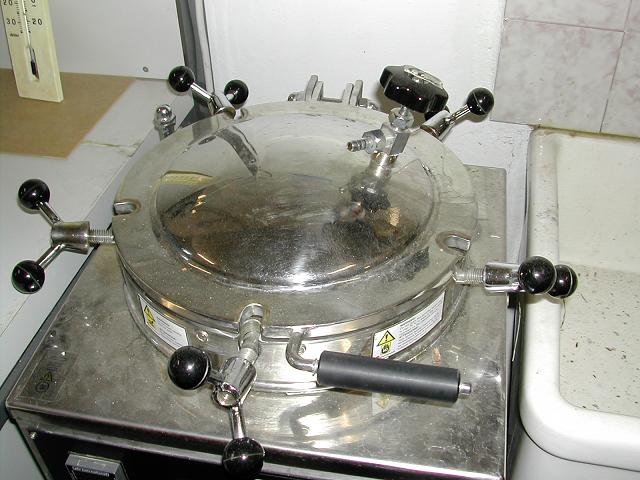Team:UNIPV-Pavia/Material Methods/Instruments
From 2010.igem.org
(New page: <table width="100%" border="0"> <tr> <td colspan="2"> {{UNIPV-Pavia/header}} </td> <!-- <td colspan="2" align="center"><html><img src="http://img337.imageshack.us/img337/76...) |
|||
| Line 17: | Line 17: | ||
=AYTOCLAVE= | =AYTOCLAVE= | ||
| + | <table><tr><td valign="top"> | ||
<html><p align="justify"> | <html><p align="justify"> | ||
An autoclave is a device to sterilize equipment and supplies by subjecting them to high pressure saturated steam at 121 °C or more, typically for 15 to 20 minutes depending on the size of the load and the contents. It was invented by Charles Chamberland in 1879, although a precursor known as the steam digester was created by Denis Papin in 1679. The name comes from Greek auto, ultimately meaning self, and Latin clavis meaning key — a self-locking device. | An autoclave is a device to sterilize equipment and supplies by subjecting them to high pressure saturated steam at 121 °C or more, typically for 15 to 20 minutes depending on the size of the load and the contents. It was invented by Charles Chamberland in 1879, although a precursor known as the steam digester was created by Denis Papin in 1679. The name comes from Greek auto, ultimately meaning self, and Latin clavis meaning key — a self-locking device. | ||
| - | </p></html> | + | </p></html> |
| + | </td> | ||
| + | <td width="20%" valign='top'> | ||
| + | {| border="1" | ||
| + | | [[Image:UNIPV_Pavia_autoclave.jpg | 250px |right|Autoclave]] | ||
| + | |} | ||
| + | </td> | ||
| + | </tr> | ||
| + | </table> | ||
<div align="right"><small>[[#indice|^top]]</small></div> | <div align="right"><small>[[#indice|^top]]</small></div> | ||
<br> | <br> | ||
Revision as of 14:59, 5 August 2010
|
|
||||||||||||||||
|
|
|||||||||||||||
 "
"

